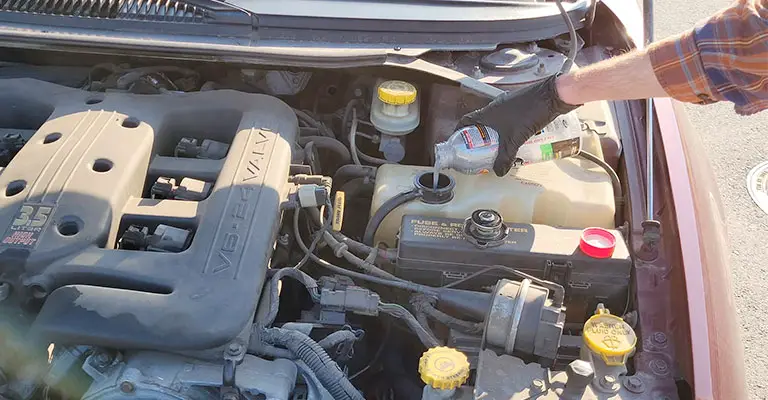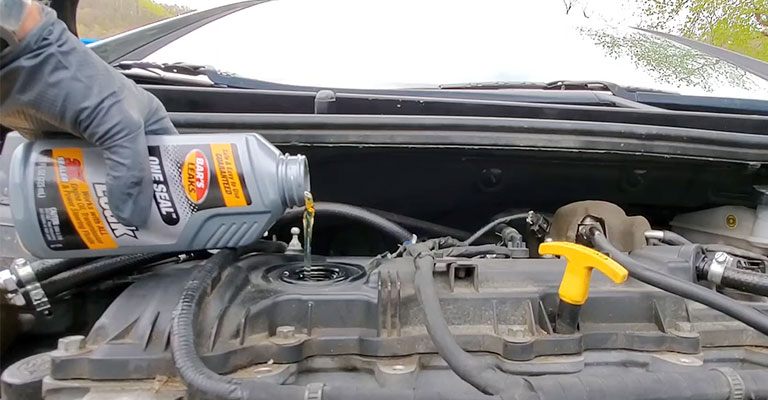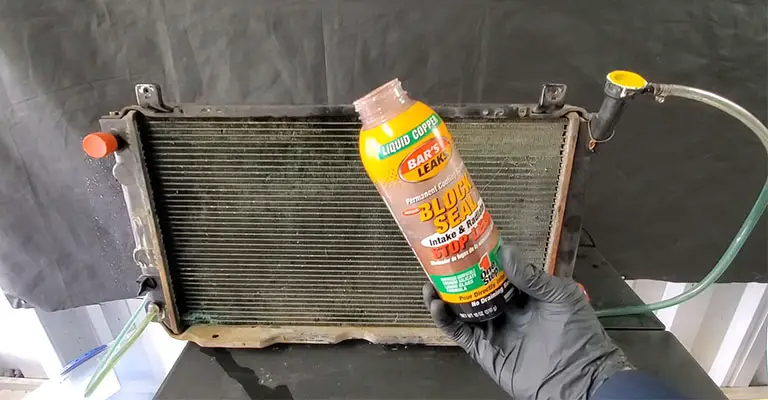Frequent engine overheating, puddles underneath the engine, or a drastic drop in coolant level are signs that your car’s radiator has a leakage. Essential fluids leak through cracks and weak points on your radiator.
Depending on where and when this happens and your automotive skills, you might opt to quickly fix such a problem, especially when it’s a minor leak. There are two solutions to radiator leaks, i.e., a radiator replacement and using radiator stop leak products. Most people often turn to stop leak additives when it’s a minor issue.

What is a Radiator Stop Leak?
A radiator stop leak is an aftermarket additive used to seal minor, slow leaks in a car’s radiator systems and leaks in-between components. Among the common components found in most radiator stop leaks include:
- Sodium silicate/ liquid glass
- Ceramic fibers and particles
- Copper, aluminum, copper, and iron particles.
How do Stop Leak Products Works?
Radiator stop leak products are somewhat different. However, they all achieve a common end goal: to seal holes in your car’s cooling system to stop leaks. Usually, the product melts and solidifies where leaks are occurring.
For instance, once ceramic fibers are heated, they create a fibrous patch where there are leaks in your radiator. Similarly, when liquid glass is heated at around 200 degrees Fahrenheit, it melts and circulates in the cooling system to form a hard seal where there are leaks. Lastly, fillers (organic, ceramic, or metallic) circulates through a radiator to create a temporary seal where there are small holes or gaps.
Overall, the goal is to fix minor leaks in your radiator temporarily. Nonetheless, using radiator-stop leak products in your car has advantages and disadvantages.

Pros of Using Radiator Stop Leak
Easy to Find
Radiator stop leak products have been around for many years, and finding one in your nearest automotive store isn’t a hassle. It’s easily accessible when you need it to do a quick fix on a leaking radiator.
It’s an easy and quick solution
If your car’s radiator heats along the road, you can easily use a radiator stop leak product to fix the issue. You only need to pour it into the radiator and have a temporary solution before meeting your mechanic for a replacement. You can even do it in your home garage within minutes.
To some extent, it doesn’t require a car owner to have expensive tools or be an automotive professional.
It’s Cheap
Replacing a car radiator is not cheap! Using a radiator stop leak to fix leaks in your radiator costs less than replacing it.
Therefore, if you’re on a budget and need quick fixing of small leaks on your radiator, using a radiator stop leak is an ideal option.
However, if you’re dealing with a major leak or your radiator is significantly damaged, you’ll have to replace it.

Cons of Using a Radiator Stop Leak
It’s a temporary fix
Radiator stop leaks are significant when you’re on a budget or need a quick fix. However, it’s just a temporary solution.
Notably, constant use of stop leaks will only increase the cost of maintaining your radiator. Usually, it should be considered the last option or an emergency measure.
Possibility of clogging your radiator
The powder and pellets in the radiator stop leak products may sometimes clog up your radiator. As a result, your car engine will end up overheating due to blockage in the radiator tubes; thus, the engine block isn’t supplied with adequate coolant.
Final Thought
Radiator leaking can be frustrating. It’s often caused by corrosion, wear in the radiator gasket and hoses, or the radiator cap failing. Suppose the leakage is minor or you need quick fixing; you can always pour a radiator stop leak additive into a cool radiator to solve such a problem. However, you should remember that such fixing is not permanent and could clog your radiator if consistently used.
Leave a Reply